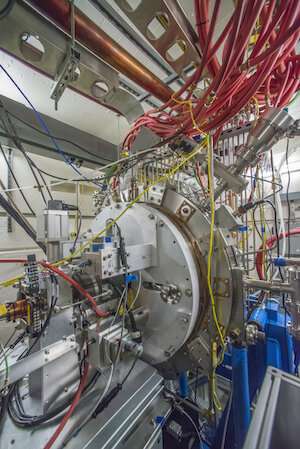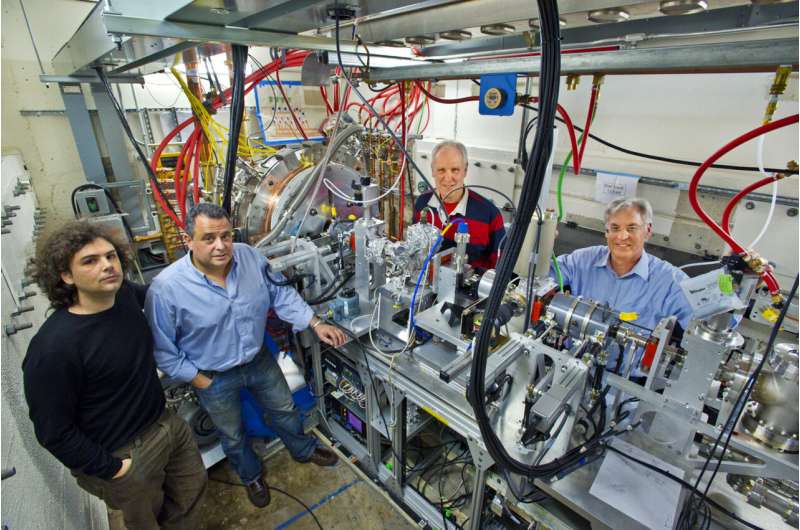Building a better electron gun

The successful test of the LCLS-II electron gun (see related article) marks the culmination of an R&D effort spanning more than a decade at the Department of Energy's Lawrence Berkeley National Laboratory (Berkeley Lab).
The gun's design was conceived in 2006 by John W. Staples, a retired Berkeley Lab physicist, and Fernando Sannibale, a senior scientist in Berkeley Lab's Accelerator Technology and Applied Physics Division. Soon after, work began on a prototype electron gun known as Advanced Photoinjector EXperiment (APEX) that would later become the prototype for the LCLS-II electron gun.
The development of the APEX prototype gun was led by Sannibale, who now serves as deputy for accelerator operations for Berkeley Lab's Advanced Light Source (ALS). The ALS generates light from accelerated electrons.
Staples, who remains an affiliate scientist at Berkeley Lab and is now assisting with conceptual work on a next-generation electron gun proposed by Sannibale and known as APEX-2, credited former engineering efforts by Berkeley Lab's Russell "Russ" Wells, now retired, and Steve Virostek on the APEX and the LCLS-II electron guns and related instrumentation.
Sannibale said, "Ten years after we began work on this concept at Berkeley Lab, it is very satisfying for us all to see the rapid progress that is being made in commissioning this important LCLS-II component." The LCLS-II project is an upgrade of the Linac Coherent Light Source X-ray free-electron laser at SLAC National Accelerator Laboratory.

Virostek, a senior engineer at Berkeley Lab who led the LCLS-II gun's construction, credited the efforts of a multidisciplinary team that included engineers, physicists, technicians, mechanical designers, and fabrication shop personnel, among others, in bringing the gun from the drawing board to its testing phase.
"A project of this scale and complexity requires tremendous planning, coordination, and expertise, and our team was up to the challenge," Virostek said.
Daniele Filippetto, a Berkeley Lab scientist who was responsible for the laser system and the electron beam diagnostic and measurements for the APEX gun—and has led the effort to use the APEX prototype gun as an ultrafast electron probe known as the High Repetition-rate Electron Scattering apparatus (HiRES), said, "This is a very big milestone for Berkeley Lab."
He noted that the LCLS-II injector gun and its prototype represent "a new generation of ultrafast instrumentation that is of strategic importance to the U.S. This is the result of R&D work performed solely at Berkeley Lab to design and demonstrate a new technology with unprecedented performance that allowed the dream of LCLS-II to become a technologically achievable reality."
In addition to the electron gun itself, Berkeley Lab also designed the first 2 meters of the LCLS-II electron beamline, which includes key components for compressing and focusing the electron beam. Staples said he is delighted that the LCLS-II electron gun design, which is based on the "reentrant pillbox cavity" accelerating structure that was conceptualized at APEX, "turned out to work beautifully."
He added, "The physics is not that difficult, but the engineering is what made it work. This is an engineering triumph."
Provided by Lawrence Berkeley National Laboratory





















